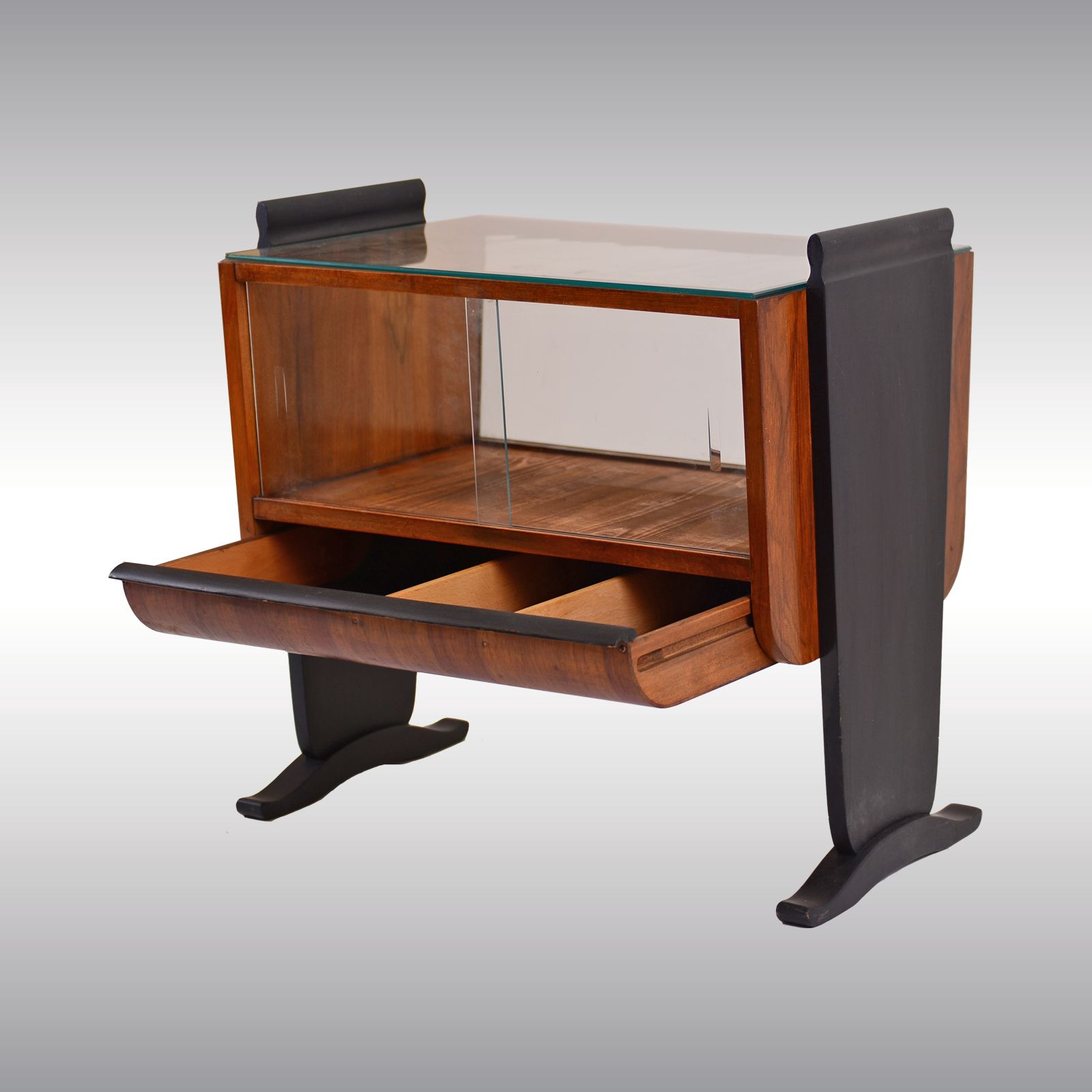Jindřich Halabala was born on May 24, 1903 in the town of Koryčany. He trained to become a cabinet maker in his father’s joinery workshop and, in 1920, entered the State-owned Woodworking School in Valašské Meziříčí. He completed his practical studies in the recently-consolidated United Woodcrafts Manufacturers company in Brno (Spojené uměleckoprůmyslové závody v Brně - UP), his future employer. The plant’s chief designer at the time was Jan Vaněk, who addressed outstanding Czech and European architects and designers for part-time collaboration. Shortly before turning twenty, Halabala enrolled in the Academy of Applied Arts in Prague, in the studio headed by Professor Pavel Janák. After graduating in 1926, he was briefly engaged in the studio of Bohumil Hübschmann in Prague, followed by his post of director of the UP company’s Prague outlet. Owing to his versatile skills, Halabala was invited to head the design studio of the UP company’s Brno branch. Shortly afterwards he became the firm’s development manager, remaining in the position until 1946. In the late 1920s, when UP began to espouse mass production of standardized furniture sets, Halabala was responsible for the firm’s product line selection. The assortment of its products was conceived so as to facilitate the assemblage of individual pieces into a wide range of furniture types, particularly pieces for storage purposes. These components could be combined into variants and units, whose multi-functionality allowed for the furnishing of whole apartments or offices exclusively with products manufactured by UP. The manufacturer’s aim was to guarantee superior quality of its products and to increase the effectiveness of its output. As it associated woodworking, metal-processing and textile-producing plants, the UP company was independent of outside contractors. Its self-sufficiency in turn enabled it to accept commissions not only for interior furnishings, but also for the comprehensive design and decoration of interiors, down to their architectural details. Jindřich Halabala was responsible not only for the development of the company’s products (he designed most of its “H” model furniture), but also for the products’ promotion and sales strategy. The company shops displayed fully furnished interiors and the customers could consult an interior designer, who was able to propose custom-targeted solutions. Especially sought-after today is the metal-tube furniture from UP’s production, whose metal parts were fabricated after 1930 in Hodonín. Initially, these were variants of the furniture designed by Mart Stam and Marcel Brauer, which at the time was also imitated by other Czechoslovak firms, such as Mücke [&] Melder, Slezak, Vichr and Gottvald. However, the UP company fabricated its own original frames, largely based on Halabala’s designs, which appear not have had any other source of inspiration. It may therefore be presumed that these were unique furniture designs that easily measured up to European standards. The same applies to Halabala’s armchairs with bentwood frames. The furniture manufactured by the UP company during the period between the wars was of superior quality, comparable to the best European furniture production of the time.

